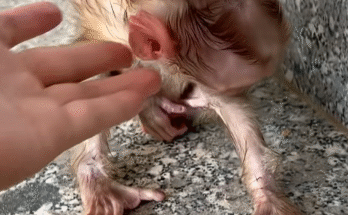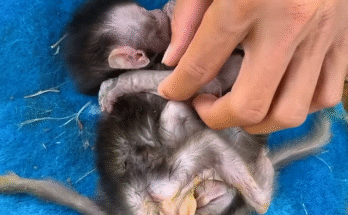
Car headlights are one of the most important components of your vehicle when it comes to safety and visibility. Over time, headlights can become cloudy, yellowed, or dirty due to constant exposure to the sun’s UV rays, dust, road grime, and weather conditions. Cloudy headlights not only affect the appearance of your car but also reduce the amount of light emitted, making it harder to see at night. The good news is that cleaning car headlights is relatively simple and can be done at home with a few common materials. In this guide, we will discuss step-by-step methods for cleaning car headlights and restoring their clarity.
Why Do Car Headlights Get Cloudy?
Most modern headlights are made of polycarbonate plastic rather than glass. While this material is durable and shatter-resistant, it is also more prone to discoloration over time. The main causes of cloudy headlights include:
- UV Damage – Prolonged exposure to sunlight can oxidize the outer layer of the plastic, causing it to turn yellow or cloudy.
- Road Debris and Dirt – Dust, dirt, and small debris from the road can scratch and wear down the headlight surface.
- Weather Conditions – Rain, snow, and humidity can accelerate the aging process of the headlight lens.
- Chemicals – Harsh cleaning chemicals or car wash detergents may damage the protective coating on the headlights.

What You Will Need
Before starting the cleaning process, gather the following items:
- Mild car soap and water
- A soft sponge or microfiber cloth
- Masking tape
- Baking soda or toothpaste (whitening toothpaste works best)
- A soft-bristled toothbrush or cloth
- Sandpaper (optional for severe oxidation, usually 1000-3000 grit)
- Headlight restoration kit (optional but effective)
- UV sealant or car wax for protection
Step-by-Step Guide to Cleaning Car Headlights
Step 1: Wash the Headlights
Start by giving your headlights a good wash with car soap and water. Use a sponge or microfiber cloth to remove all dirt, dust, and road grime. This ensures that you are working on a clean surface before moving on to the restoration process. Dry the headlights completely with a clean cloth.
Step 2: Protect the Surrounding Area
Use masking tape to cover the areas around your headlights, such as the paint and bumper. This prevents accidental scratches or damage when cleaning or sanding the headlights.
Step 3: Choose Your Cleaning Method
There are several DIY methods for cleaning headlights, depending on the level of cloudiness.

Method 1: Using Toothpaste
Toothpaste contains mild abrasives that can help remove oxidation and restore clarity.
- Apply the Toothpaste – Squeeze a small amount of toothpaste onto a soft cloth or sponge.
- Rub the Headlight – Gently rub the toothpaste in circular motions across the headlight surface. Apply moderate pressure for 3-5 minutes.
- Rinse and Dry – Rinse off the toothpaste with water and wipe the headlight with a clean microfiber cloth. Repeat the process if needed.
Method 2: Baking Soda and Vinegar
Baking soda is another effective abrasive cleaner that can help polish headlights.
- Make a Paste – Mix 2 tablespoons of baking soda with enough vinegar to form a thick paste.
- Apply the Paste – Spread the mixture on the headlight and scrub using a soft cloth.
- Rinse and Wipe – Rinse with water and dry with a clean towel.
Method 3: Sandpaper for Severe Oxidation
If your headlights are severely cloudy, toothpaste or baking soda may not be enough. Wet sanding is an effective way to remove the oxidized layer.
- Wet the Headlight and Sandpaper – Always keep the headlight surface and sandpaper wet to avoid scratches.
- Sand the Surface – Start with 1000 grit sandpaper and sand in a horizontal motion. Then use 2000 grit in vertical motion for better results.
- Polish and Seal – After sanding, use a polishing compound or toothpaste to restore the shine. Finally, apply a UV sealant or wax.
Method 4: Headlight Restoration Kit
For a professional finish, you can use a headlight restoration kit. These kits usually come with sanding pads, polishing compounds, and UV protectants. Follow the manufacturer’s instructions for best results.
Step 4: Apply UV Protection
Once your headlights are clean and clear, it’s important to protect them from future damage. Apply a thin layer of UV sealant or car wax to create a protective barrier. This step helps prevent oxidation and keeps your headlights clear for longer.

Step 5: Maintenance Tips
To keep your headlights in good condition:
- Wash your headlights regularly along with your car.
- Reapply car wax every few months to maintain UV protection.
- Avoid using harsh chemicals or abrasive brushes.
- Park in shaded areas to minimize sun exposure.
Benefits of Clean Headlights
Keeping your headlights clean is not just about aesthetics. Here are the key benefits:
- Improved Visibility – Clean headlights provide better illumination at night, improving safety.
- Enhanced Appearance – Shiny headlights make your car look newer and more well-maintained.
- Cost Savings – Regular cleaning can extend the lifespan of your headlights, avoiding costly replacements.
- Increased Resale Value – A well-maintained vehicle with clear headlights is more appealing to buyers.
When Should You Replace Headlights?
If your headlights remain yellowed, cracked, or scratched even after cleaning and polishing, it may be time to replace them. Replacement headlights provide maximum brightness and ensure your safety on the road.
Conclusion
Learning how to clean car headlights is a simple yet valuable skill for any car owner. Whether you use toothpaste, baking soda, or a professional restoration kit, the key is to remove the oxidized layer and protect the surface afterward. With proper care, your headlights can stay crystal clear for years, ensuring both safety and style.


